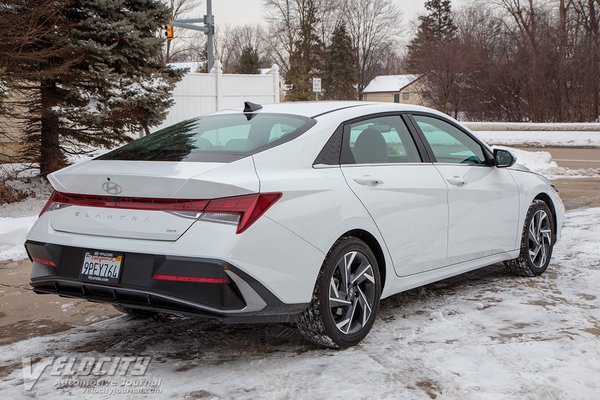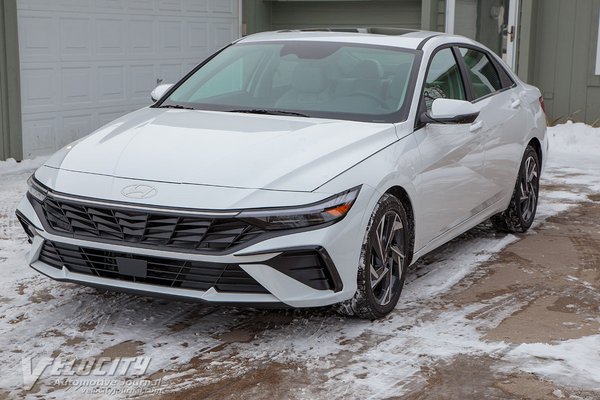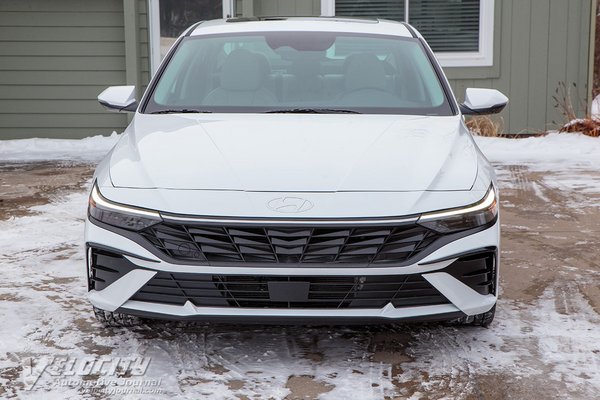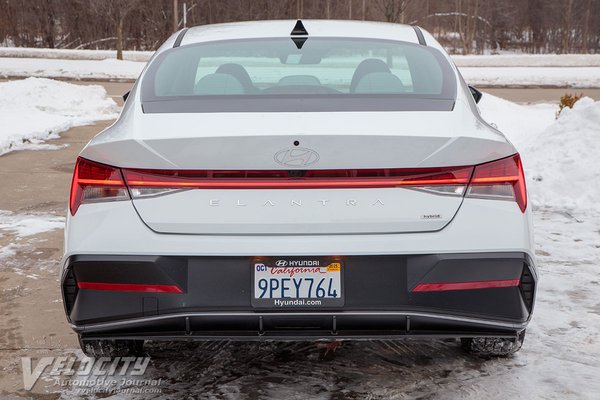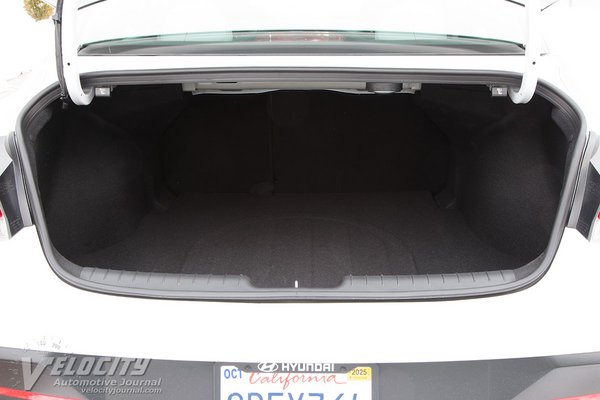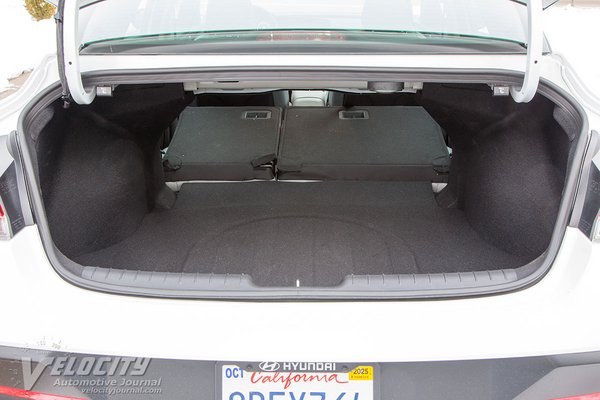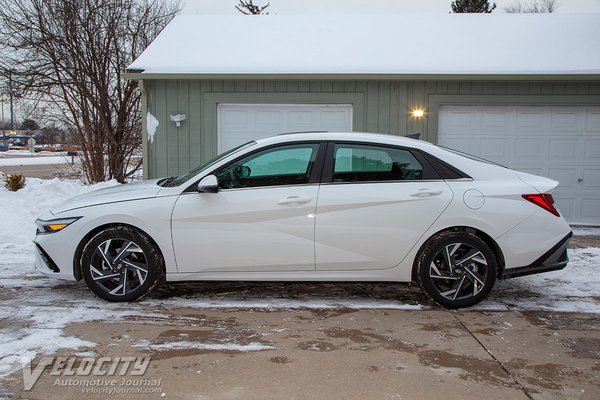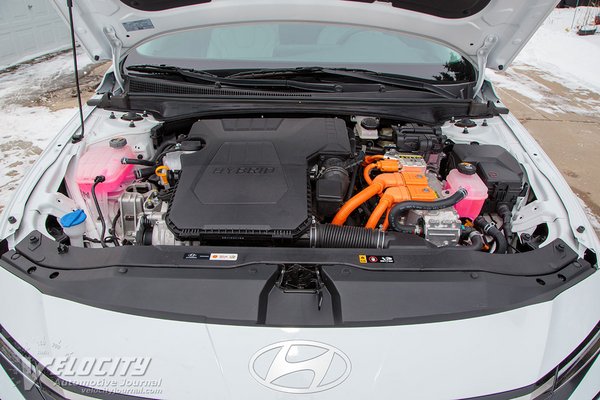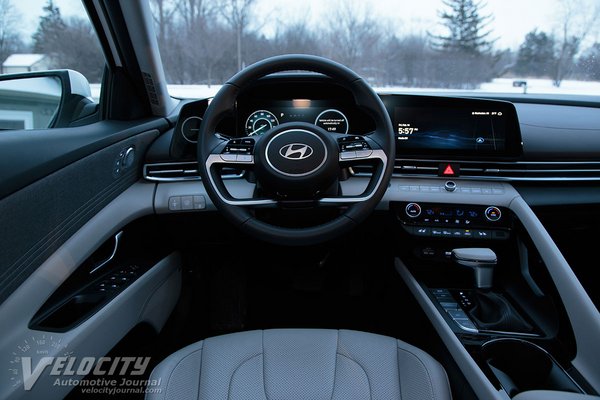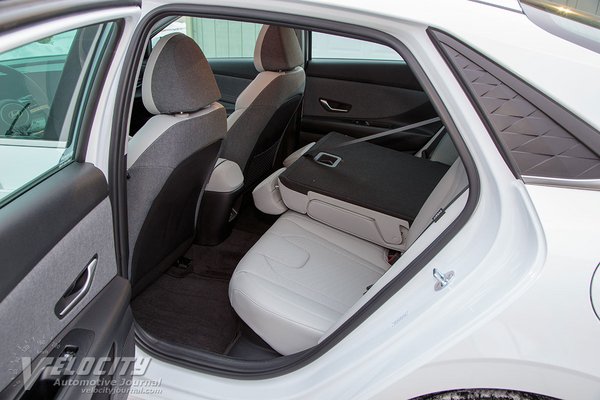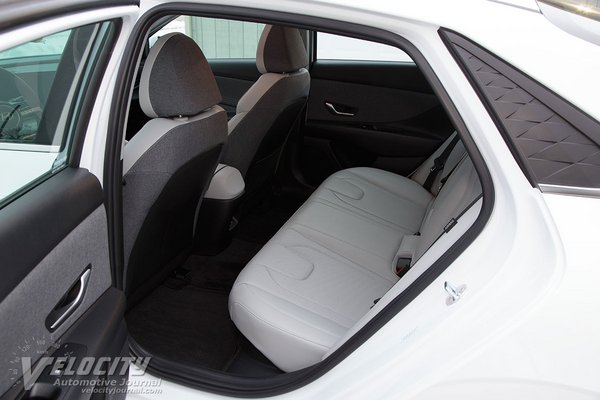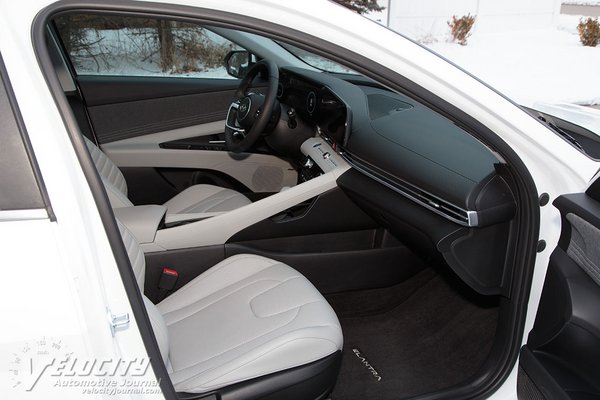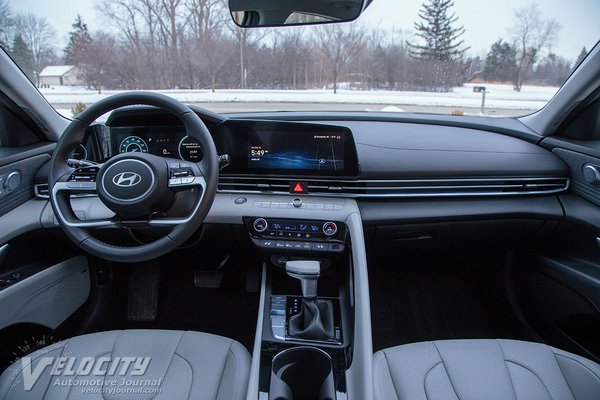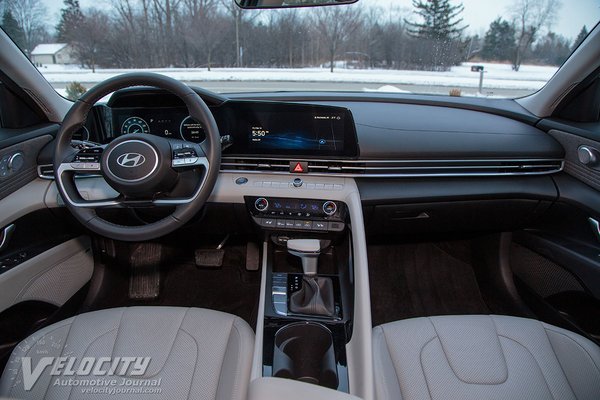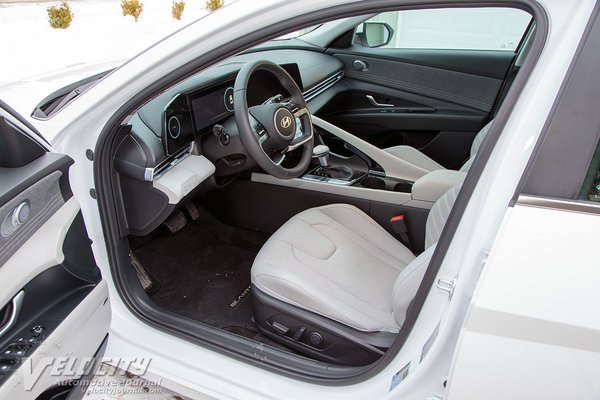2025 Hyundai Elantra Hybrid Limited
08/04/2025
Shahed Hussain
Hyundai's compact Elantra is a popular entry level sedan in the US. Available in gas and hybrid powertrains, Hyundai offers an expansive range of Elantra models. The base Elantra SE starts at $22,125 and tops out at $34,350 for the high performance Elantra N. The fuel-efficient Elantra Hybrid models are is sold in three versions: Blue ($25,450), SEL Sport ($27,425), and Limited ($29,800).
We tested a 2025 Elantra Hybrid Limited ($29,450) painted in Serenity White ($470). The only option was carpeted floor mats ($210). Including the freight fee ($1,150), the price totaled up to $31,280. Note that Hyundai has raised the MSRP of the Elantra Hybrid Limited. Significant standard equipment includes 6-way power driver's seat with lumbar support, heated and ventilated front seats, 8-speaker Bose(R) audio system, 10.25-in. infotainment display, navigation, Qi wireless charging pad, and Wi-Fi hotspot. Safety technologies include smart cruise, forward collision-avoidance, blind-spot collision-warning, rear cross-traffic collision-avoidance and lane keeping assist.
An all-aluminum DOHC 1.6L or 2.0L inline-4 powers all Elantras. SE, SEL Sport and Limited models get an Atkinson-cycle 147-hp 2.0L. A 201-hp turbo 1.6L powers the Elantra N Line, and the hot Elantra N gets a 276-hp turbo 2.0L. Hybrid Elantras have a direct-injected Atkinson-cycle 1.6L inline-4 developing 104-hp @ 5,700 RPM and 109 lb.-ft. @ 4,000 RPM. A 1.32 kWh lithium-ion battery pack powers a 240V permanent-magnet synchronous AC motor rated at 32 kW (43 hp) and 125 lb.-ft. of torque. Total system power and torque is 139-hp and 195 lb.-ft., respectively. A 6-speed dual-clutch transmission (DCT) sends power to the front wheels. EPA fuel economy estimates are 49/52 MPG (city/hwy.). We averaged an unimpressive 33-34 MPG in mixed urban and highway driving, although the chilly winter temperatures during our test significantly reduced hybrid system efficiency.
All Elantras share a MacPherson front suspension coupled to a stabilizer bar. At the rear is a multi-link independent setup with coil springs, dampers and stabilizer bar (Hybrid, N Line and N). Other Elantras get a semi-independent torsion beam axle. Hybrid Elantras are equipped with 17-in. alloy wheels and 225/45R17 Hankook Kinergy GT all-season tires. Brakes are discs at all four wheels: 11.0-in. vented rotors (front) and 10.3-in. solid rotors (rear). A motor-assisted rack-and-pinion steering system is geared for 2.5 turns lock-to-lock. The Elantra Hybrid's curb weight is a relatively heavy 3,069 lbs. due to the hybrid powertrain and battery pack.
Hyundai's interiors consistently feature quality material and excellent build quality. Most interior surfaces are padded plastics, and combined with matte aluminum and gloss black trim contribute to a premium appearance. A rectangular digital instrument cluster includes an analog-style speedometer and a powertrain status gauge. An unusual 4-spoke steering wheel has integrated audio, phone and cruise controls. The infotainment touchscreen displays navigation and audio system functions. Climate controls are located on the center console. A 12V outlet and a USB-A port on the center console allow charging portable electronics. Dual cupholders are located on the center console behind the transmission shift lever. A longitudinal spar connects the center console to the dashboard. We're puzzled why Hyundai included this odd design element that impedes front passenger access to the climate controls.
The Elantra's front seats offer excellent lateral support and comfort, but the sunroof limits headroom for occupants taller than 5'-10". Rear seat comfort is above average, although the hard seatback for the center position makes it a usable for short trips only. Rear headroom is similarly limited to 5'-10" passengers.
Driving the Elantra Hybrid is remarkably similar to a non-hybrid compact sedan. At typical highway speeds, wind, tire and engine noise are subdued. The 6-speed DCT executes quick, smooth shifts and takes advantage of the electric motor's low-RPM torque. Midrange powertrain torque is also better than expected. Above 70 MPH, the 1.6L engine is doing most of the work, and its 104-hp/125 lb.-ft. delivers weak acceleration, even when lightly loaded.
Hyundai's engineers endowed the Elantra with sharp, accurate steering and excellent turn-in response. Mild understeer and minimal body roll contribute to the Elantra's sporty handling. The suspension tuning delivers excellent ride comfort, absorbing most impacts from potholes and patched roads. The all-disc brakes respond linearly and progressively, even when regenerative braking is recharging the battery pack.
The Elantra Hybrid offers excellent value and above average handling in a spacious interior package. We expected lower fuel consumption, but winter temperatures reduce the efficiency advantages of hybrids. Frugal customers in the snowbelt states should consider the Elantra Limited instead, saving a few thousand dollars and getting the more powerful 2.0L engine. We believe the Elantra Hybrid is a better option for warmer climates where its powertrain can deliver on its fuel efficiency potential.

